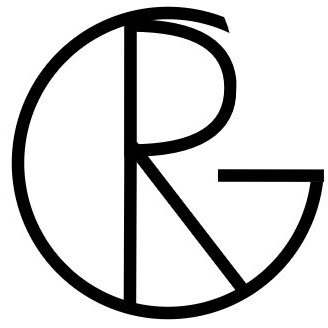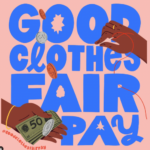Greenwashing is a term that has become increasingly apparent in today’s society. In an earlier article “Not So Green After All – Greenwashing” I already discussed its appearance in the fashion industry.
The definition of greenwashing according to the oxford dictionary is “disinformation disseminated by an organization so as to present an environmentally responsible public image”. It is used for companies who market their products or strategies as sustainable or environmentally friendly without any evidence that they are.
It is not a huge surprise that the term is becoming much more popular now that brands have realized how beneficial a sustainable image is. Many brands have been called out for their alleged greenwashing.
Let’s take a look at two cases of greenwashing scandals in the fashion industry.

H&M
In 2021 Swedish fast fashion brand H&M came out with their “Conscious Collection” which the brand claimed was designed with the planet in mind. However, American marketing student Chelsea Commodore stated that these claims were false and filed a lawsuit with the New York federal court. Commodore argued that the brand capitalizes on ‘the growing market segment of customers who care about the environment. She told a story about how she bought a clothing piece for a higher price than the usual price of H&M because the garment was “conscious”.
According to H&M these pieces are made with the environment in mind and are claimed to use 50 percent more sustainable materials, such as organic cotton and recycled polyester, compared to the other collections. To support these claims H&M joined the Higgs Index. The Higgs index is a sustainability software platform developed by the Sustainability Apparel Coalition, to help companies measure their impact. However, after the lawsuit, H&M quickly removed the Higgsscores from their website. According to the investigation, the Higgs index is highly deceptive. Commodore also points out that several of the products use 100 percent polyester, a material that we know is actually highly unsustainable and leaves microfibres in the environment.
H&M claims that it uses plastics from recycled PET bottles, however, Commodore argues that this accelerates the speed at which it ends up in landfill compared to if the plastics were recycled in bottles again. Last, the recycling program from H&M is deceptive. Right now as little as 1 percent of all clothing used is recycled to make more clothes. H&M is the second largest producer of clothing and according to Quartz creates 3 billion garments each year. Although clothes can definitely be recycled and there are certain recycling programs, for these production volumes the programs are inadequate.
The lawsuit was filed in July this year so it will take some time to be finalized,
Next to this case the brand also has received a lot of criticism around its sustainability initiatives. Many claim they are vague and are a form of greenwashing since there is a lack of transparency on the environmental impact and the reduction of greenhouse gas emissions.
Zara
Like H&M Zara is one of the biggest fast fashion retailers in the world, with over 24 collections including roughly twelve thousand designs every year. It is well known that the brand plays an enormous role in overconsumption and it has a huge impact on the environment
To reduce their impact on the environment Zara launched a limited edition capsule collection in December 2021. For this clothing line, the brand used LanzaTech’s technology to create new fabrics from carbon emissions instead of using virgin materials. Zara claimed that the capturing and using of carbon emissions would lower the release of these emissions into the atmosphere and also reduce the amounts of virgin materials.
However, the brand was criticized for its role in the fast fashion industry, and even though this collection was created to reduce the impact it still supports the “buy to wear once mentality”.
With the use of LanzaTech’s technology around 20 percent of the polyester comes from carbon emissions. So then does that mean that the collection is greenwashing? Similar to the other collections of Zara the collection still has a very short lifecycle, and it will end up in a landfill creating more pollution. The brand is responsible for overconsumption and with this collection that does not lessen. Contrary, collections like these can even lead to more consumption because consumers believe the products to be “good”, and thus feel like they can buy more.
So unless Zara and many other brand start actively working on reducing consumption it is not unlikely to assume that they are greenwashing. As Orsola de Castro, co-founder and creative director of Fashion Revolution, said “brands need to address the root cause of its impact, not just its effects…”.

How to tell when a brand is greenwashing?
There are many more greenwashing scandals that have taken place in the fashion industry. So the next question we have to ask then is how can you recognize when a brand is probably greenwashing?
Is the brand providing data on its targets and initiatives?
Brands often use words like “ethical”, “eco-friendly”, and “environmentally friendly” to convince their consumers of how sustainable they are. However, these same brands often lack data and figures on far they to reach their goals. If a brand does not provide any data it usually is because there is nothing to share.
Does the brand have collections that they call sustainable?
Usually, when brands have collections that are said to be sustainable it is a marketing tool. They want to make the consumer see the brand as more sustainable even though it is only a very small part of their production. It is a great initiative to have a sustainable collection, however, if the rest of the companies remains the same it does not mean that all the unsustainable practices are gone.
Does the brand grant promises that mostly contain the headquarters?
So many times I have read that brands are creating these sustainable and fancy-looking headquarters, but lack to mention anything about their factories, and warehouses. This is usually a sign of greenwashing since they want to have a sustainable image, but lack to change anything in the place that it actually matters.
Good on You has also written an interesting article on this topic so if you want to read more about greenwashing please click here.




